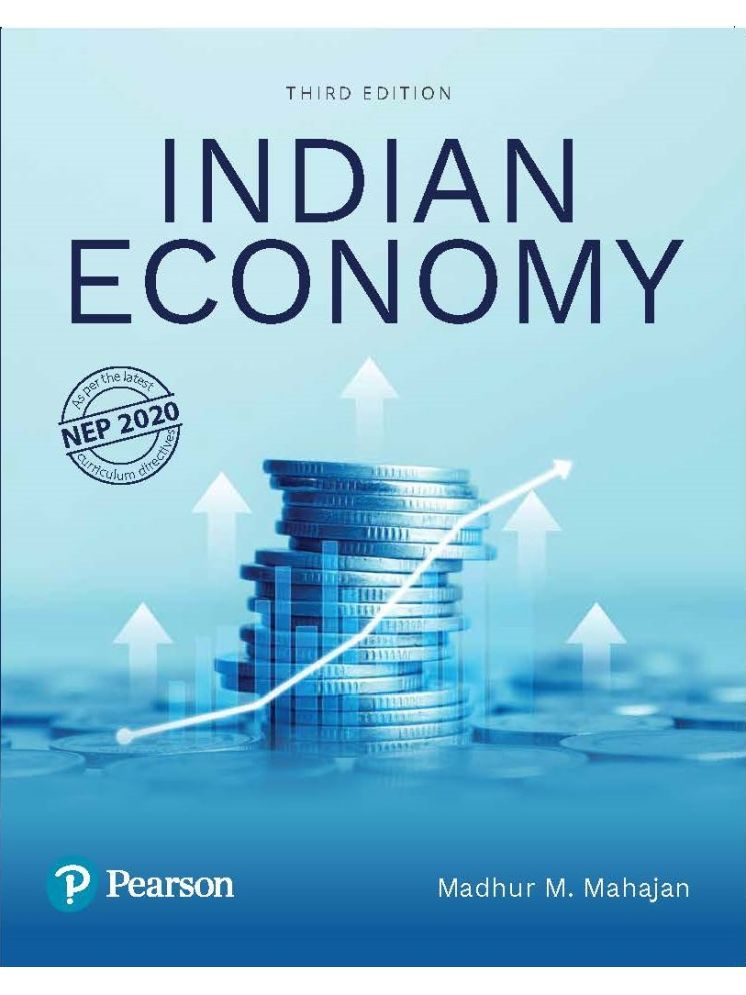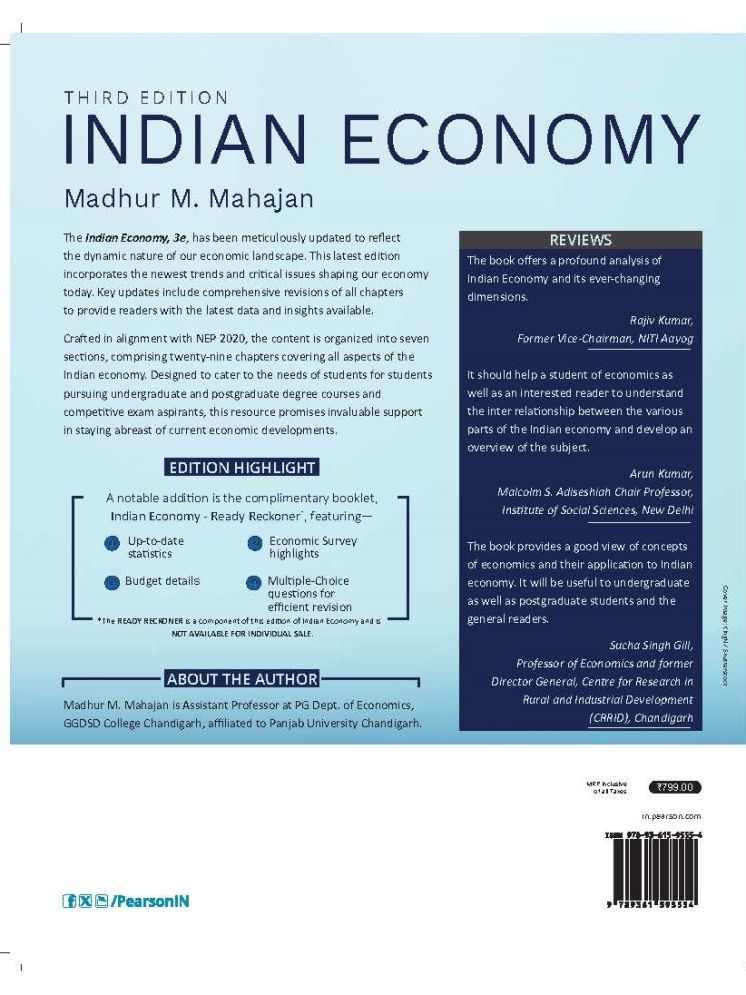The Indian Economy, 3rd Edition, has been meticulously updated to reflect the dynamic nature of our economic landscape. This latest edition incorporates the newest trends and critical issues shaping our economy today. Key updates include comprehensive revisions of all chapters to provide readers with the latest data and insights available.
Crafted in alignment with NEP-2020, the content is organized into seven sections, comprising twenty-nine chapters covering all aspects of the Indian economy. Designed to cater to the needs of students for students pursuing undergraduate and postgraduate degree courses and competitive exam aspirants, this book promises invaluable support in staying abreast of current economic developments.
Edition Highlight: A notable addition is the complimentary booklet, "Indian Economy – Ready Reckoner,"
Features –
The chapter summary at the end of every chapter provides the crux of the whole chapter and will be a significant help to revise the chapter in a short span of time especially before the exams.
1. Up-to-date statistics on Indian Economy
2. 2023–24 Economic Survey highlights
3. 2024–25 Budget commentary
4. Multiple-choice questions for efficient revision
5. Glossary at the end of book will help the students to understand the various complex terms associated with Indian economy.
6. The multiple-choice questions at the end of every chapter will broaden the objective understanding of the reader.
About the Author -
Dr. Madhur M. Mahajan is an Assistant Professor at PG Dept. of Economics, GGDSD College Chandigarh, affiliated to Panjab University Chandigarh. He did his post-graduation in Economics and Ph.D. in international trade from Department of Economics, Panjab University Chandigarh.
Dr. Mahajan has over 18 years of vast teaching and research experience and is guiding research on various dimensions of Indian Economy and Health Economics including Economics of Happiness, Economic Burden of Health, Affordability of Health and Health Efficiency.
He has published numerous papers in esteemed international and national journals and presented papers in international and national conferences/seminars. He has organized numerous panel discussions/seminars and lectures on various economic issues and frequently appears in television discussions/debates.
Review –
The book offers a profound analysis of Indian Economy and its ever-changing dimensions. – Rajiv Kumar, Former Vice-Chairman, NITI Aayog
It should help a student of economics as well as an interested reader to understand the inter relationship between the various parts of the Indian economy and develop an overview of the subject. – Arun Kumar, Malcolm S. Adiseshiah Chair Professor, Institute of Social Sciences, New Delhi
The book provides a good view of concepts of economics and their application to Indian economy. It will be useful to undergraduate as well as postgraduate students and the general readers. - Sucha Singh Gill, Professor of Economics and former,Director General, Centre for Research in Rural and Industrial Development (CRRID), Chandigarh
Book Contents –
1. Few Basic Concepts and Nature of Indian Economy 2. National Income, Savings, and Capital Formation 3. Human Development and Happiness Economics 4. Natural Resources, Environment, and Sustainable Development 5. Indian Infrastructure 6. India's Population and Demographic Dividend 7. Poverty and Inequality in India 8. Labor Force, Occupational Pattern, and Unemployment in India 9. Indian Economy During Pre-Independence Period 10. Indian Agriculture. Productivity, Land Reforms, and Livestock 11. Agriculture Inputs and Green Revolution 12. Agriculture Prices and Food Security 13. Agriculture Finance in India 14. Agriculture Marketing in India 15. Industrial Development and Policies 16. Public, Private, and Small Sector in Indian Economy 17. Service Sector in India—Characteristics, Growth, and Sustainability 18. Foreign Trade and Policy 19. Balance of Payments, Foreign Exchange, and Investment 20. WTO, International Economic Institutions and Regional Trade Blocks 21. Indian Monetary System. Banking, RBI, and Money Market 22. Indian Capital Market 23. Inflation in India 24. Indian Tax System 25. Public Expenditure, Debt Management, and Fiscal Policy 26. Center-State Financial Relations in India 27. Planning in India 28. Black Money and Demonetization 29. Economic Reforms in India


